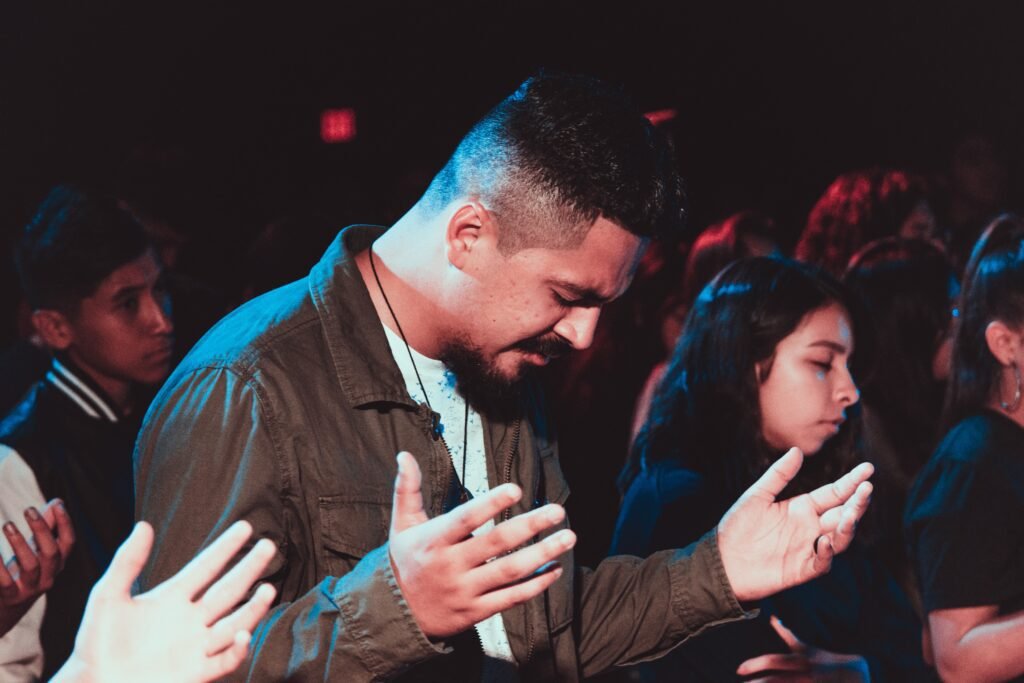The Liturgy Of Hours: Structuring Your Day With Catholic Time Principles
So, we stumbled upon this fascinating book called “The Liturgy of Hours: Structuring Your Day with Catholic Time Principles.” It’s all about how to organize your day in a way that aligns with the rich traditions and principles of the Catholic faith.
Instead of the usual hustle and bustle, this book offers a refreshing perspective on time management, taking into account the spiritual aspects of our daily lives. It guides you through the process of integrating prayer, reflection, and quiet contemplation into each segment of your day, helping you create a more meaningful and fulfilling routine.
Whether you’re a devout Catholic or simply looking to bring more mindfulness into your daily schedule, this book presents a thoughtful approach to structuring your day that’s sure to resonate with many.

Introduction to the Liturgy of Hours
Brief Explanation of the Liturgy of Hours
The Liturgy of Hours, also known as the Divine Office or the Breviary, is a practice in the Catholic Church that involves the recitation of prayers and psalms at specific times throughout the day. It is a structured form of prayer that allows individuals to sanctify time and enter into a rhythm of prayer and praise.
Importance of Catholic Time Principles in structuring daily life
Catholic Time Principles are deeply rooted in the belief that time is a gift from God to be used for His glory. By structuring our daily lives around the Liturgy of Hours, we are reminded of the sacredness of time and our constant need for communion with God. This practice helps us cultivate a spirit of prayer and praise and keeps us focused on our ultimate goal of union with God.
History and Significance of the Liturgy of Hours
Origins of the Liturgy of Hours
The Liturgy of Hours has its roots in the ancient Jewish tradition of reciting prayers and psalms at specific times throughout the day. The early Christians adopted this practice and incorporated it into their own liturgical worship. Over time, as the Church grew and developed, the Liturgy of Hours became an integral part of the daily prayer life of priests and religious.
Development and evolution throughout Catholic history
Throughout the centuries, the Liturgy of Hours underwent several developments and adaptations. It was during the Middle Ages that the structure and content of the prayers became more standardized. The Second Vatican Council in the 1960s brought about further reforms in an effort to make the Liturgy of Hours more accessible and meaningful for the laity.
Role of the Liturgy of Hours in the life of priests and religious
For priests and religious, the Liturgy of Hours is an essential part of their spiritual formation and ministry. It helps them stay connected to God and fosters a sense of unity with the Church as they pray in communion with their fellow brothers and sisters in Christ. The daily recitation of the Liturgy of Hours allows priests and religious to fulfill their duty of offering continuous prayer and intercession for the world.
Understanding Catholic Time Principles
Divine Office and the concept of liturgical hours
The Divine Office is another term used to refer to the Liturgy of Hours. It consists of a set of prayers and readings that are prescribed to be recited at specific times of the day. These designated times, known as liturgical hours, are meant to sanctify each moment and consecrate the entire day to God. By adhering to the liturgical hours, we participate in the universal prayer of the Church and join in the worship of God as a unified body of believers.
Sanctifying time through the Liturgy of Hours
The Liturgy of Hours provides a framework for sanctifying time and consecrating each moment to the glory of God. It reminds us that time is not something to be wasted or idly spent, but a precious gift that should be used wisely and purposefully. By praying the Liturgy of Hours throughout the day, we are able to weave our ordinary activities and responsibilities into a tapestry of prayer and praise, ultimately transforming our daily lives into an ongoing act of worship.
Embracing a rhythm of prayer and praise throughout the day
One of the fundamental aspects of the Liturgy of Hours is its emphasis on maintaining a regular rhythm of prayer and praise throughout the day. By setting aside specific times for prayer, we are able to pause and refocus our attention on God amidst the busyness and distractions of our daily lives. This intentional practice helps us cultivate a deeper relationship with God and allows His grace to permeate every aspect of our existence.
Structure of the Liturgy of Hours
Overview of the different hours and their purpose
The Liturgy of Hours is divided into different “hours” or periods of prayer throughout the day. These hours include Morning Prayer (Lauds), Midmorning Prayer (Terce), Midday Prayer (Sext), Midafternoon Prayer (None), Evening Prayer (Vespers), and Night Prayer (Compline). Each hour has a specific purpose and content, allowing for a balanced and varied prayer experience as the day unfolds.
Morning Prayer (Lauds): Welcoming the new day with praise
Morning Prayer, also known as Lauds, is traditionally celebrated at dawn and is meant to be the first prayer of the day. It is a time of thanksgiving and praise, as we acknowledge God’s presence in our lives and offer Him our worship and adoration. Morning Prayer sets the tone for the day ahead and prepares our hearts and minds to receive God’s grace and guidance.
Midmorning Prayer (Terce): Seeking God’s guidance in the midst of the day
Midmorning Prayer, also known as Terce, is recited around the third hour of the day (around 9 a.m.). It is a time for reflection and a pause in our daily activities to seek God’s guidance and wisdom. Terce serves as a reminder that we are not alone in our endeavors and that God is always with us, ready to guide and direct our paths.
Midday Prayer (Sext): Finding renewal and strength in the middle of the day
Midday Prayer, also known as Sext, is traditionally prayed at noon. It is a chance to pause and regroup amidst the busyness and demands of the day. Sext allows us to find renewal and strength in God’s presence as we entrust our tasks and responsibilities to Him. It is a moment of rejuvenation and an opportunity to reconnect with our purpose and the source of our strength.
Midafternoon Prayer (None): Offering thanks and surrendering to God’s will
Midafternoon Prayer, also known as None, is recited around the ninth hour of the day (around 3 p.m.). It is a time to offer thanks for the blessings of the day and surrender our will to God. None invites us to reflect on our actions and intentions, seek forgiveness for any wrongdoing, and recommit ourselves to following God’s will in all that we do.
Evening Prayer (Vespers): Reflecting on the day and seeking forgiveness
Evening Prayer, also known as Vespers, is typically prayed at sunset and marks the transition from day to night. It is a time for reflection and examination of conscience as we review the events of the day. Vespers provides an opportunity to seek forgiveness for any shortcomings or failures and to express gratitude for God’s presence and guidance throughout the day.
Night Prayer (Compline): Entering into peaceful rest and entrusting the night to God
Night Prayer, also known as Compline, is the final prayer of the day and is recited before bedtime. It is a time to enter into peaceful rest, entrusting ourselves and the events of the night to God’s care. Compline allows us to reflect on the blessings and challenges of the day, express our appreciation for God’s love and protection, and prepare ourselves for a restful night’s sleep.

Implementing the Liturgy of Hours in Your Daily Life
Adapting the Liturgy of Hours to individual circumstances
While the traditional structure of the Liturgy of Hours may not be feasible for everyone, it is possible to adapt and tailor this practice to fit individual circumstances. It is important to recognize that the Liturgy of Hours is ultimately a framework for prayer and should be approached with flexibility and openness. Whether it means combining certain hours or adjusting the times to fit one’s schedule, the key is to establish a consistent routine that allows for regular prayer and reflection throughout the day.
Establishing a routine and allocating time for each hour
To effectively incorporate the Liturgy of Hours into daily life, it is essential to establish a routine and set aside dedicated time for each hour of prayer. This may involve waking up earlier in the morning or rearranging one’s schedule to accommodate the various prayer times. By prioritizing the Liturgy of Hours and making it a non-negotiable part of daily life, one can cultivate a rhythm of prayer and experience the transformative power of this practice.
Using the Liturgy of Hours as a framework for prayer and spiritual growth
The Liturgy of Hours serves as a powerful framework for prayer and spiritual growth. By following the designated prayers and readings for each hour, individuals are exposed to a rich treasury of psalms, hymns, and biblical passages that nourish the soul and deepen one’s relationship with God. Additionally, the Liturgy of Hours provides a structure for individuals to incorporate personal intentions and intercessions, allowing for a holistic prayer experience that encompasses both communal and individual needs.
Benefits of Living by Catholic Time Principles
Deepening one’s relationship with God through regular prayer
Living by Catholic Time Principles through the practice of the Liturgy of Hours offers numerous benefits, one of which is the deepening of one’s relationship with God. By committing to regular prayer and incorporating it into the fabric of daily life, individuals develop a habit of turning to God in all circumstances. This consistent communication with God fosters a sense of intimacy and trust, allowing for a deeper and more meaningful connection with the Divine.
Finding peace and stillness in a busy world
In a world characterized by busyness and constant activity, the Liturgy of Hours provides a sacred space for peace and stillness. By setting aside dedicated time for prayer and reflection, individuals can transcend the chaos of daily life and find solace in the presence of God. The Liturgy of Hours serves as an anchor amidst the busyness, offering a moment of respite and an opportunity to quiet the mind and cultivate inner peace.
Strengthening one’s faith and spiritual discipline
Living by Catholic Time Principles and embracing the Liturgy of Hours nurtures and strengthens one’s faith and spiritual discipline. This practice instills a sense of accountability and responsibility to engage in regular prayer, even when faced with distractions or challenges. By committing to the Liturgy of Hours, individuals develop a habit of seeking God’s presence and guidance throughout the day, ultimately deepening their faith and fostering a greater sense of spiritual discipline.

Challenges and Solutions in Embracing the Liturgy of Hours
Time constraints and practical difficulties in following all the hours
One of the main challenges in embracing the Liturgy of Hours is the potential time constraints and practical difficulties in following all the designated hours. It may not always be feasible to pause and pray at specific times throughout the day, especially for individuals with demanding schedules or other responsibilities. However, it is important to remember that the Liturgy of Hours is a flexible practice that can be adapted to individual circumstances. Consistency is key, so even incorporating one or two hours of prayer into the day can still yield spiritual benefits.
Strategies for overcoming challenges and maintaining consistency
To overcome the challenges of time constraints and maintain consistency in practicing the Liturgy of Hours, there are several strategies that can be employed. One approach is to prioritize the hours of prayer that are most feasible based on one’s schedule and commitments. Another strategy is to utilize technology and digital resources, such as online apps or audio recordings, that provide flexibility in accessing the prayers and readings. Additionally, seeking support and accountability from a community or spiritual director can help individuals stay motivated and committed to the practice of the Liturgy of Hours.
Resources and Tools for Practicing the Liturgy of Hours
Traditional breviaries and prayer books
Traditional breviaries and prayer books have long been used as the primary resources for practicing the Liturgy of Hours. These books contain the prescribed prayers, psalms, readings, and hymns for each hour of prayer. There are various versions and editions available to cater to different preferences and needs, ranging from compact pocket-sized breviaries to more elaborate and comprehensive volumes.
Online and mobile applications for the Liturgy of Hours
In recent years, the advent of technology has made the Liturgy of Hours more accessible and convenient through online and mobile applications. These apps provide digital versions of the prayers and readings, allowing individuals to participate in the Liturgy of Hours even when they are on the go or away from their physical breviaries. These digital platforms often offer customizable options and reminders, making it easier to incorporate the practice into daily life.
Community support and participation in liturgical celebrations
Another invaluable resource for practicing the Liturgy of Hours is the support and participation of a community. Joining a parish or religious community that regularly celebrates the Liturgy of Hours can provide structure, guidance, and a sense of communal prayer. Attending liturgical celebrations, such as Morning Prayer or Evening Prayer at a local parish, allows individuals to partake in the communal worship of God and experience the richness of this tradition within a larger faith community.
In conclusion, the Liturgy of Hours serves as a spiritual anchor in the midst of our hectic lives, enabling us to sanctify time and enter into a rhythm of prayer and praise. By understanding the history, significance, and structure of the Liturgy of Hours, we can implement this practice in our daily lives, adapting it to our individual circumstances.
Living by Catholic Time Principles through the Liturgy of Hours deepens our relationship with God, brings peace and stillness, strengthens our faith, and helps us overcome challenges along the way. With the availability of resources and tools such as breviaries, online apps, and community support, anyone can embark on the journey of embracing the Liturgy of Hours and find spiritual nourishment in the practice of Catholic Time Principles.






